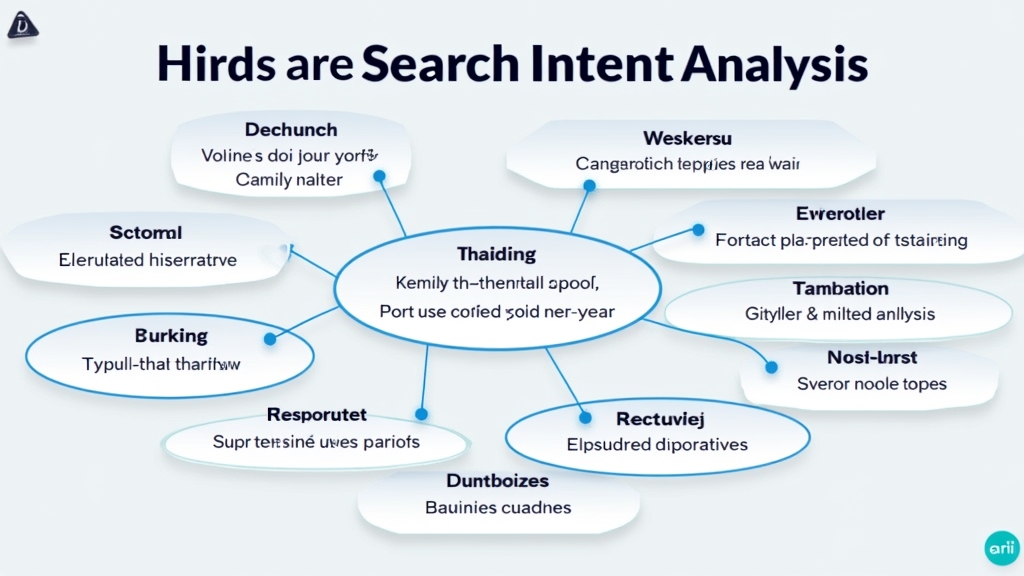Marketing – Search Intent Analysis: Understanding User Needs for Effective Strategies
Introduction
Importance of Search Intent in Marketing
In the world of digital marketing, understanding search intent is crucial. It helps you connect with your audience by addressing their specific needs and questions. When you know what users are looking for, you can create content that resonates with them, leading to higher engagement and conversions. This article will guide you through the different types of search intent and how they can shape your marketing strategies.
Overview of Search Intent Types
Search intent can be categorized into four main types: informational, navigational, transactional, and commercial investigation. Each type reflects a user’s goal when they enter a query into a search engine. By recognizing these intents, you can tailor your approach to meet user expectations effectively.
What is Search Intent?
Definition and Explanation
Search intent refers to the reason behind a user’s online search. It reveals what the user hopes to achieve—whether it’s finding information, navigating to a website, making a purchase, or comparing products. Understanding this concept allows marketers to align their content with user goals.
Why Understanding Search Intent Matters
Understanding search intent matters because it directly impacts your marketing success. When you create content that matches what users are searching for, you’re more likely to attract relevant traffic. This alignment not only improves SEO rankings but also enhances user satisfaction as visitors find exactly what they need.
Types of Search Intent
Informational Intent
Informational intent occurs when users seek knowledge or answers about a specific topic without any immediate intention to purchase. For example, someone searching “how to bake chocolate cake” is looking for recipes or tips rather than buying ingredients right away.
Navigational Intent
Navigational intent involves users trying to reach a particular website or page directly. An example would be someone typing “Facebook login.” They already know where they want to go; they’re just using Google as a shortcut.
Transactional Intent
Transactional intent indicates that users are ready to make a purchase or complete an action online. A typical query might be “buy running shoes online.” Users here are actively seeking options for purchasing products.
Commercial Investigation
Commercial investigation represents users who are researching products before making decisions but aren’t quite ready to buy yet. For instance, someone searching “best smartphones 2023” wants information on various models before committing.
How to Analyze Search Intent
Tools and Techniques for Analysis
To analyze search intent effectively, utilize tools like Google Analytics and keyword research platforms such as SEMrush or Ahrefs. These tools help identify which keywords drive traffic and reveal patterns in user behavior based on their searches.
Analyzing Keywords for Search Intent
When analyzing keywords for search intent, categorize them according to the four types mentioned earlier. Look at the language used in queries—words like “buy” indicate transactional intent while phrases like “how-to” suggest informational needs.
Incorporating Search Intent into Marketing Strategies
Content Creation Based on Search Intent
Creating content tailored around identified search intents ensures relevance and value for your audience. For example, if targeting informational queries about gardening tips, consider writing blog posts or guides that provide detailed insights into gardening techniques.
SEO Optimization and Targeting User Needs
SEO optimization should reflect the understanding of search intents by incorporating relevant keywords naturally within your content structure—titles, headings, meta descriptions—and ensuring that each piece addresses specific user needs effectively.
Case Studies: Successful Implementation of Search Intent Analysis in Marketing
Examples from Various Industries
Many companies have successfully utilized search intent analysis in their marketing strategies:
- E-commerce: Retailers optimize product pages based on transactional queries leading directly to increased sales.
- Travel: Agencies focusing on informational searches about destinations see higher engagement rates through blogs offering travel tips.
Each case shows how aligning content with user intentions leads businesses toward greater success.
Key Takeaways from Each Case Study
The key takeaway from these examples is clear: understanding what drives potential customers helps tailor messages that resonate deeply with them—boosting both visibility and conversion rates significantly across various industries.
Challenges in Identifying and Utilizing Search Intent
Common Pitfalls Marketers Face
Marketers often struggle with misinterpreting search intents due primarily either due lack of data analysis skills or overgeneralizing terms without considering context variations among different audiences—which may lead campaigns astray from intended targets altogether!
Solutions to Overcome These Challenges
- Invest time into thorough keyword research using reliable analytics tools.
- Regularly update strategies based on changing trends observed within target demographics.
- Engage teams collaboratively across departments (like sales & customer service) so insights gained inform overall strategy development comprehensively!
Conclusion
Understanding search intent analysis is essential for effective marketing strategies today! By grasping its importance now—and adapting accordingly—you’ll position yourself ahead amidst evolving consumer behaviors shaping future trends within digital landscapes!
📢 Explore More: Continue Your Journey!
If this article helped you understand how important it is to analyze search intent in marketing strategies effectively check out How Keyword Research Can Transform Your Content Strategy! It covers powerful insights helping you understand how targeted keywords improve engagement even further!














![NEEWER 55W 18"/45cm Ring Light Kit [New Version], 5600K Dimmable ...](https://m.media-amazon.com/images/I/414QLqvZWLL.jpg)








